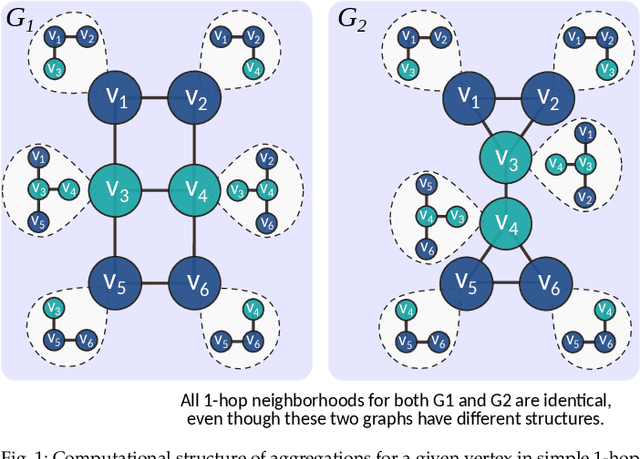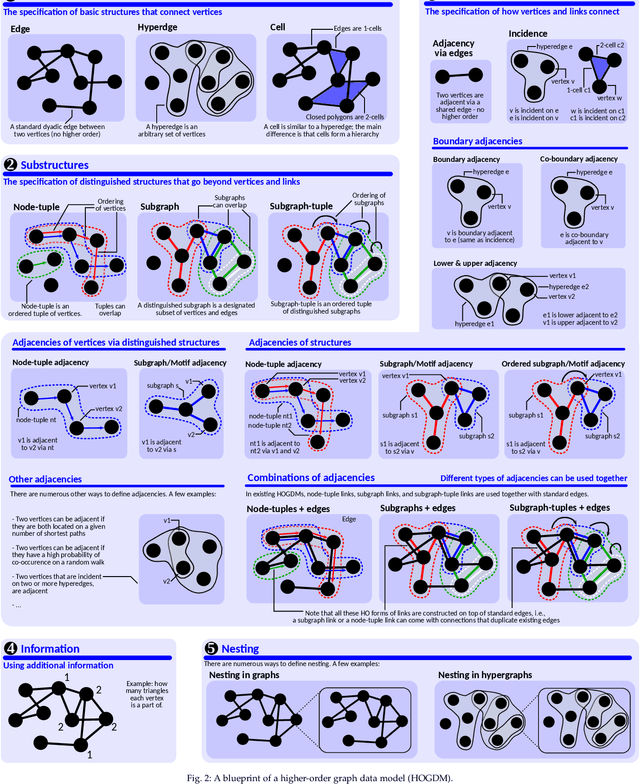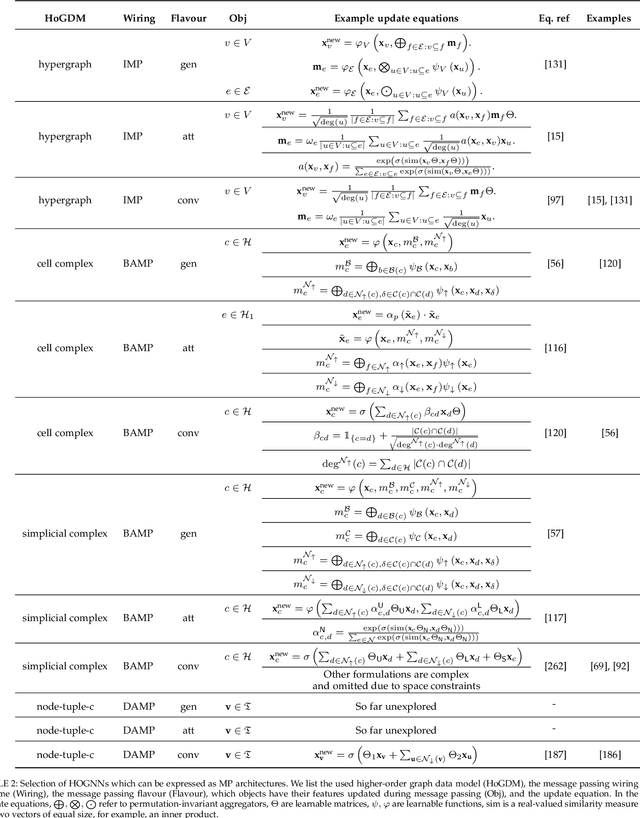Florian Scheidl
Demystifying Higher-Order Graph Neural Networks
Jun 18, 2024



Abstract:Higher-order graph neural networks (HOGNNs) are an important class of GNN models that harness polyadic relations between vertices beyond plain edges. They have been used to eliminate issues such as over-smoothing or over-squashing, to significantly enhance the accuracy of GNN predictions, to improve the expressiveness of GNN architectures, and for numerous other goals. A plethora of HOGNN models have been introduced, and they come with diverse neural architectures, and even with different notions of what the "higher-order" means. This richness makes it very challenging to appropriately analyze and compare HOGNN models, and to decide in what scenario to use specific ones. To alleviate this, we first design an in-depth taxonomy and a blueprint for HOGNNs. This facilitates designing models that maximize performance. Then, we use our taxonomy to analyze and compare the available HOGNN models. The outcomes of our analysis are synthesized in a set of insights that help to select the most beneficial GNN model in a given scenario, and a comprehensive list of challenges and opportunities for further research into more powerful HOGNNs.
Neural Graph Databases
Sep 20, 2022



Abstract:Graph databases (GDBs) enable processing and analysis of unstructured, complex, rich, and usually vast graph datasets. Despite the large significance of GDBs in both academia and industry, little effort has been made into integrating them with the predictive power of graph neural networks (GNNs). In this work, we show how to seamlessly combine nearly any GNN model with the computational capabilities of GDBs. For this, we observe that the majority of these systems are based on, or support, a graph data model called the Labeled Property Graph (LPG), where vertices and edges can have arbitrarily complex sets of labels and properties. We then develop LPG2vec, an encoder that transforms an arbitrary LPG dataset into a representation that can be directly used with a broad class of GNNs, including convolutional, attentional, message-passing, and even higher-order or spectral models. In our evaluation, we show that the rich information represented as LPG labels and properties is properly preserved by LPG2vec, and it increases the accuracy of predictions regardless of the targeted learning task or the used GNN model, by up to 34% compared to graphs with no LPG labels/properties. In general, LPG2vec enables combining predictive power of the most powerful GNNs with the full scope of information encoded in the LPG model, paving the way for neural graph databases, a class of systems where the vast complexity of maintained data will benefit from modern and future graph machine learning methods.
 Add to Chrome
Add to Chrome Add to Firefox
Add to Firefox Add to Edge
Add to Edge